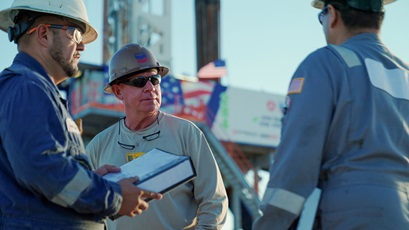our operations
how increasing US oil and gas production affects gas prices
2 min read | august 14, 2023
As gas prices soared last year, Sheila Michoff said she organized her life to fill up less.
“I would consciously think about where I was going,” said Michoff, who paid up to $6.25 a gallon last July in her hometown of Redding, California. “I’d plan my stops to make sure all my errands were in one area.”
Now that national averages are back down to $3.71 , Michoff admits that she’s not paying as close attention to her gas receipts. But, like many, she says she has no idea what causes cost fluctuations at the pump.

According to the U.S. Energy Information Administration, crude oil prices play the largest role in determining retail gas prices.
five fuel factors
Supply and demand are some of the biggest factors in gas costs, as seen last year when oil constraints drove prices up. Other factors that impact prices include:
- Retailers: According to the American Petroleum Institute, less than 1% of convenience stores that sell gas are owned by big oil companies—nearly all are independently owned. These retailers adjust prices to stay competitive in their local markets.
- Refining costs: Crude oil goes through a cleaning and separating process called refining before it reaches your local station. When the price of this process goes up, due to factors like maintenance costs or supply chain disruptions, so does what you pay at the pump.
- Taxes: Government gas taxes vary across regions. In Michoff’s home state of California, the gas tax increased by $0.04 per gallon over the Fourth of July weekend.
- Distribution and marketing: The cost of transporting gas from refineries to stations is another piece of the pricing puzzle. This is most often accomplished through pipelines, boats, trucks and trains. Additionally, marketing costs from refineries, distributors, wholesalers and retailers impact what you pay.
- Crude oil: Gasoline is made from high grade crude oil. It plays the largest role in the cost of fuel. Along with global demand, geopolitical instability and supply chain issues can affect crude oil prices.
by the numbers
23%
expected increase in global energy demand by 2045
16%
growth in chevron’s permian basin production
50%
increase in chevron’s U.S. gulf of mexico production
pumping up production
Demand for gas isn’t slowing down, so additional supply is needed to keep prices affordable. The Organization of the Petroleum Exporting Countries (OPEC) predicts global demand for oil will grow to 110 million barrels a day by 2045, increasing by 23%.
Chevron is helping meet rising demands by expanding production across the U.S., including a 16% increase in the Permian Basin in 2022.
By 2026, production at our U.S. Gulf of Mexico facilities—which boast some of the lowest carbon intensity operations in the world—is expected to increase by nearly 50% to approximately 300,000 barrels per day.
We’re working to keep up with global demand and help drivers like Michoff fuel an affordable, reliable, ever-cleaner energy future.
topics covered
related content
-

 how APOLO helps chevron pinpoint prime drilling locations
how APOLO helps chevron pinpoint prime drilling locationsour operationsnovember 12, 2025
-

 robotics supports more efficient workplace
robotics supports more efficient workplaceour operationsnovember 10, 2025
-

 the people who power the US energy advantage
the people who power the US energy advantageour operationsnovember 06, 2025
-

 a statement from chevron CEO mike wirth on Argentina
a statement from chevron CEO mike wirth on Argentinaour operationsseptember 24, 2025
chevron email updates
Subscribe to our newsletter to receive news and updates.



